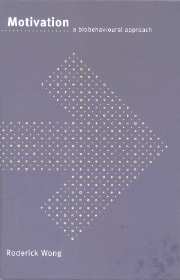Book contents
- Frontmatter
- Contents
- Preface and acknowledgements
- 1 Introduction and perspective
- 2 Mating and reproductive activities
- 3 Parental/maternal activities
- 4 Feeding activities
- 5 Food selection
- 6 Drinking activities
- 7 Stimulus seeking and exploratory activities
- 8 Aversive motivation systems: fear, frustration and aggression
- 9 Social motivation: attachment and altruism
- 10 Conclusions and retrospective
- References
- Author index
- Subject index
7 - Stimulus seeking and exploratory activities
Published online by Cambridge University Press: 10 December 2009
- Frontmatter
- Contents
- Preface and acknowledgements
- 1 Introduction and perspective
- 2 Mating and reproductive activities
- 3 Parental/maternal activities
- 4 Feeding activities
- 5 Food selection
- 6 Drinking activities
- 7 Stimulus seeking and exploratory activities
- 8 Aversive motivation systems: fear, frustration and aggression
- 9 Social motivation: attachment and altruism
- 10 Conclusions and retrospective
- References
- Author index
- Subject index
Summary
Observations of animals placed into an unfamiliar environment indicate that they display a characteristic pattern of behaviour which suggests exploration. They typically move throughout the physical space and enter many parts of it. If unfamiliar objects are present in this environment, the animals may approach these objects and make physical contact with them. These actions are characteristic of stimulus seeking behaviour ‘which serves to acquaint the animal with the topography of the surroundings included in the range’ (Shillito, 1963). Such behaviour in which the animal familiarises itself with its environment may serve an adaptive role. By doing so, the animal acquires information that is potentially useful, such as discovering potential food sources and escape routes. The phenomenon is manifested in all mammals. The notion that familiarity of the environment assists solutions to problems encountered later is also relevant to humans using the World Wide Web. Users who surf the Web without any particular goal acquire information which may become useful to them in later contexts (Seltzer, 1998).
Russell (1983) suggested that there is more to be gained from immediate exploration of a new environment than from not exploring, and thus regards the former as an adaptive strategy. Not exploring would lay an animal open to the hazards of an unknown environment. In social animals such as the rat, exploration may also have the goal of establishing contact with conspecifics. This is often the case when the animal has been removed from a group for testing (Suarez & Gallup, 1985).
- Type
- Chapter
- Information
- MotivationA Biobehavioural Approach, pp. 164 - 186Publisher: Cambridge University PressPrint publication year: 2000



